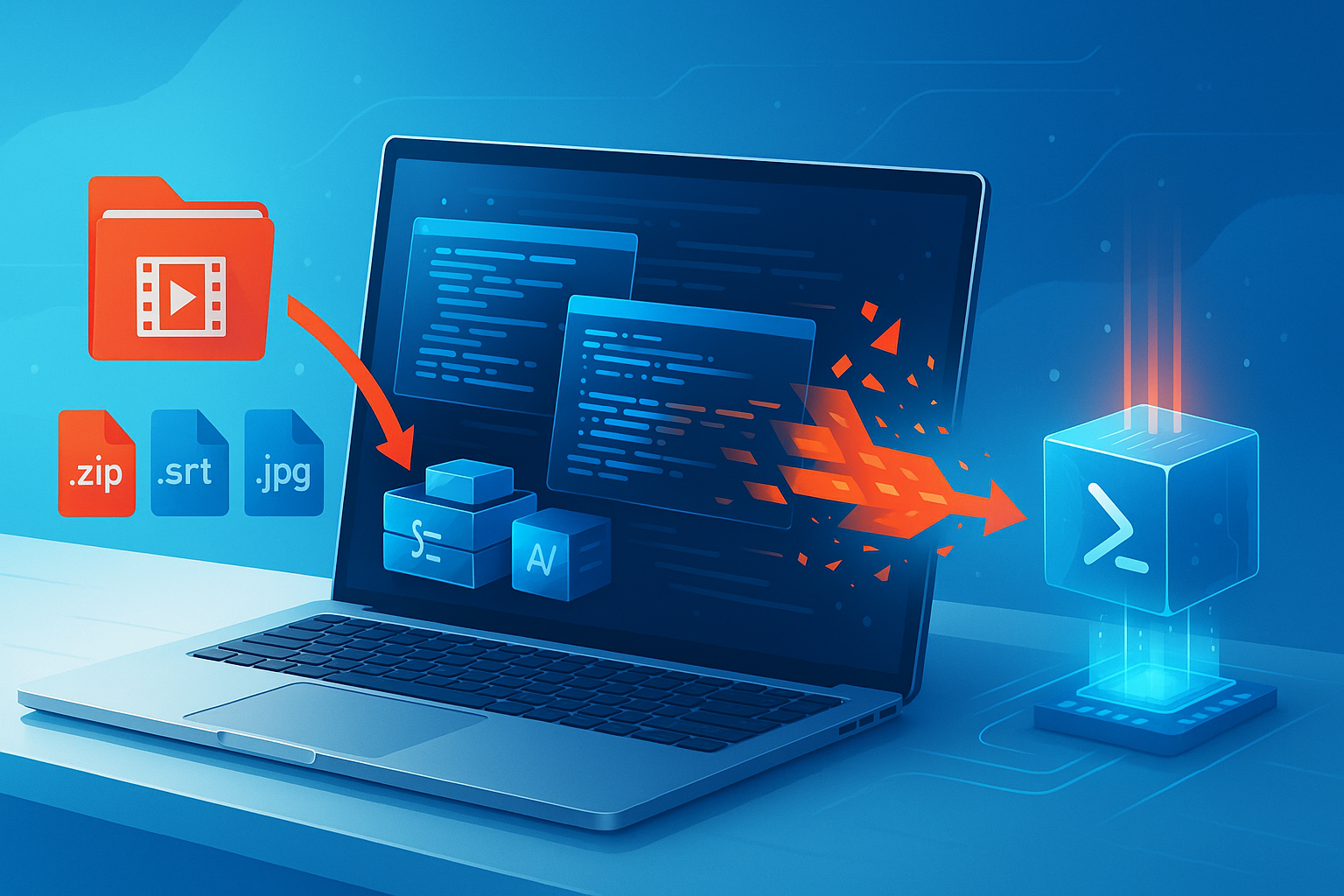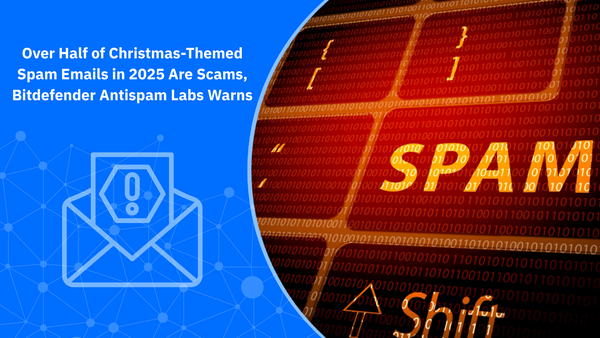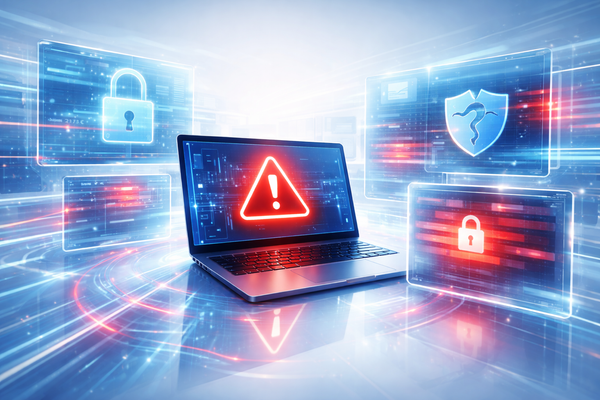Twitch Scams: What Viewers Need to Know (and Do) in 2025
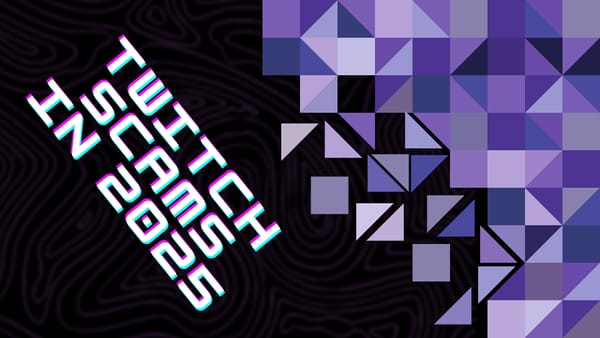
Twitch scams prey on speed and hype. If you’re in the crosshairs, slow down, double-check and never click or pay without checking the source.
Why Twitch is a ripe target
Twitch mixes live video, fast-moving chat, hype-driven rewards such as drops and giveaways, and even real money in the form of Bits, subs and donations. That deadly cocktail rewards urgency, which is the very thing scammers thrive upon.
Although Twitch bans fraud and offers various tools to fight it, attackers keep shifting tactics, so viewers need practical, up-to-date defenses.
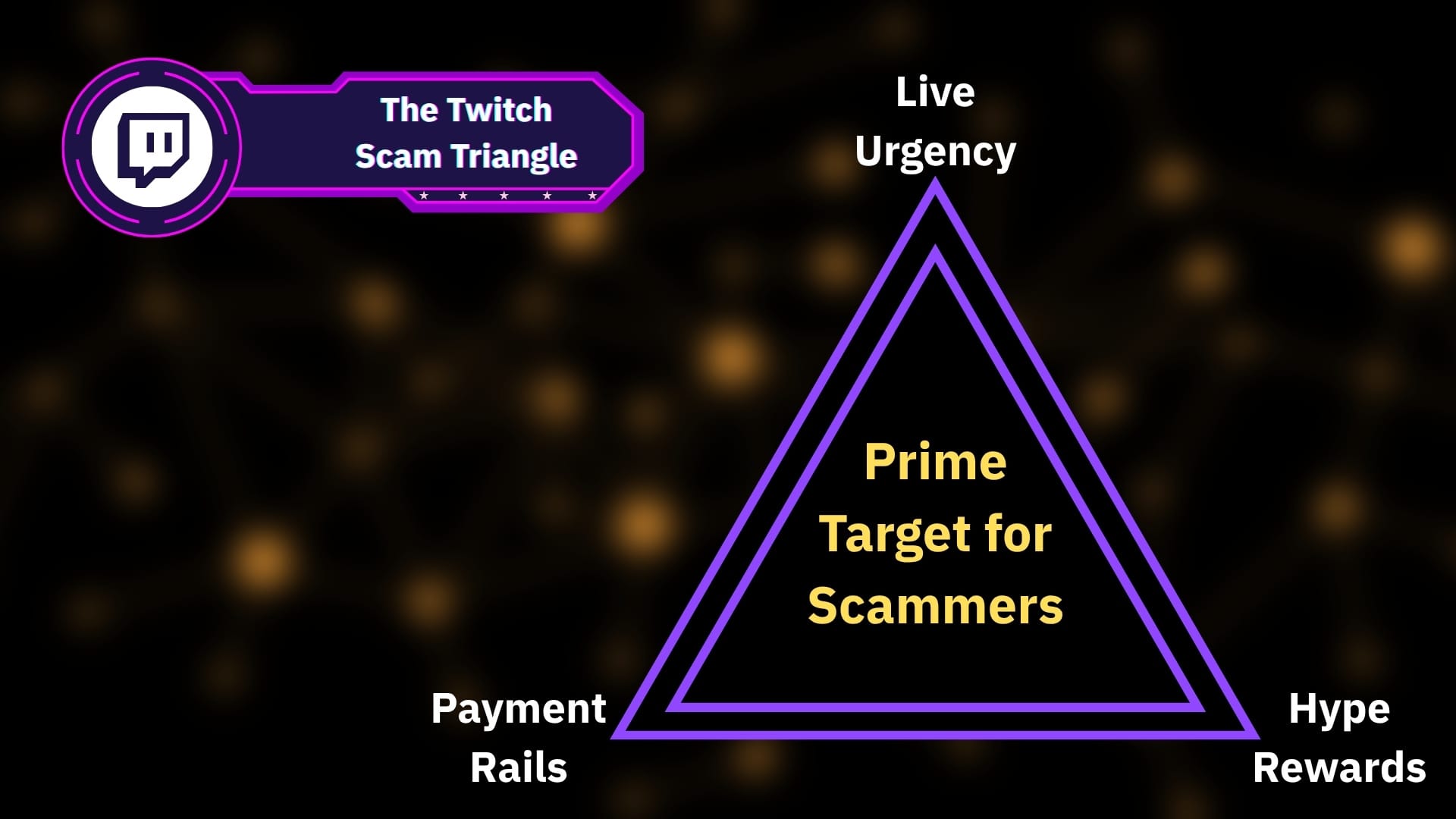
The most common Twitch scams in 2025
1. Fake drops, giveaways and loot offers
Scammers pose as streamers, or “official” game partners, and promise rare skins, beta keys or bundle codes. They push you to click out to copycat websites where you can “claim” rewards by logging in, entering payment details or downloading certain files to your device. Variants of this scam have previously abused big titles and Riot/Twitch giveaway lures. If it’s not an official Drops campaign shown in your Twitch inventory, treat it as suspect.
Red flags
- ‘Limited keys left!’
- ‘60 seconds left to claim!’
- Off-Twitch forms asking for credentials or credit card
- A domain that’s close to, but not exactly, the game’s or Twitch’s official site
2. Impersonation and AI-assisted deepfake lures
Accounts copy streamer names/avatars or pretend to be “Twitch Support,” nudging you to DM or visit a link to “verify an account,” “claim a prize,” or “avoid suspension.” In 2025, AI voice/face cloning pushes this to a whole new level, so expect convincing voice notes or short videos linked from chat/whispers. Verify handles and badges, and, most importantly, never heed DMs demanding urgency or payment.
3. Email and message phishing (“account suspended,” “copyright strike”)
In this scenario, threat actors send emails or in-app whispers claiming your account could be suspended unless you “appeal” immediately.
Most of the time, clicking the link they send you lands you on a credential harvester. Don’t click; go directly to Twitch via your own bookmark and check the Security & Privacy setting and Support notifications.
4. Charity and fundraiser abuse
Most charity streams are legitimate and do good. However, perpetrators often piggyback on real crises and high-profile events, spinning up fake fundraisers or middlemen that siphon donations.
If you want to do a good deed, donate via the charity’s official page or other vetted platforms linked from the charity’s own website.
5. Malicious links and compromised extensions
Links in chat, panels or bios may direct unsuspected visitors to malware, wallet drains, data-stealing downloads or other cleverly disguised digital landmarks. Even legitimate channel extensions have had security incidents in the past.
A rule of thumb is that, if something prompts unexpected permissions or downloads, back out immediately. Naturally, you should also keep your software, operating system, and antivirus solution up to date for top-notch protection.
6. Fake ‘free Bits/subs’ generators
This Twitch scam involves websites or videos promising free Bits or gifted subs in exchange for surveys, downloads or your Twitch login. Plot twist: there’s no such thing.
Twitch classifies this style of fraud alongside viewbotting, phishing, impersonation and other attempts to exploit the platform.
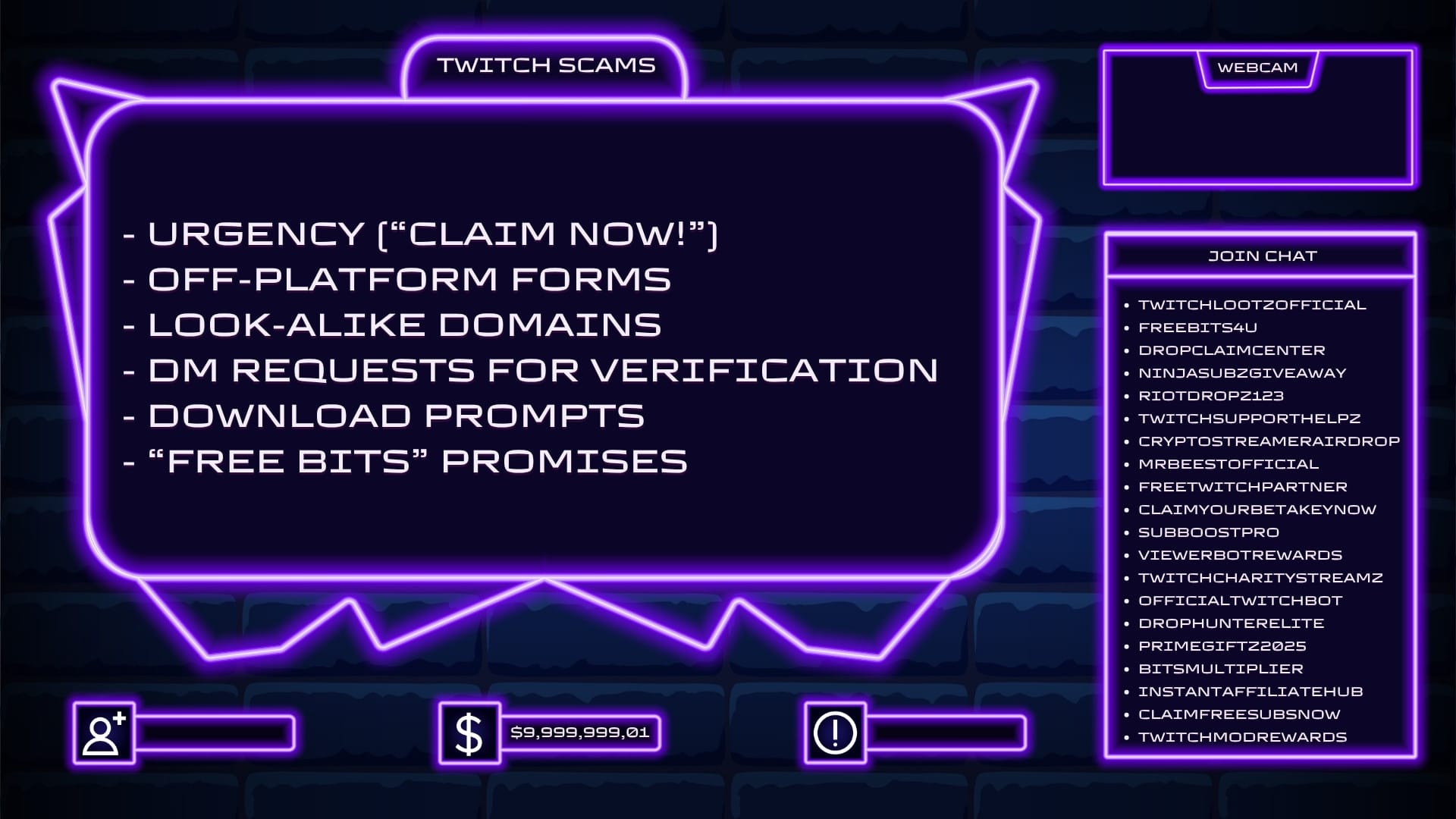
How viewers can protect themselves (fast, practical steps)
Awareness and education are at the front line of your defenses against Twitch scams. Learning about the latest tactics, techniques and procedures (TTPs) can help you spot them and dodge them with grace.
Below you will find quick, easy steps to follow to prevent your Twitch account from being hacked:
1. Use MFA on your Twitch account
Twitch supports SMS and authenticator apps. Enable MFA and lock email and payments with MFA, too. When turning on MFA, favor authenticator apps, since SMS authentication is vulnerable to SIM-swapping attacks.
2. Never log in through links
If a link claims to be Twitch, a publisher, a payment page or any other legitimate service, don’t click it. Instead, try navigating there using your own bookmarks. Threat actors’ cunning knows no limits, and AI only boosted their creativity in finding ways to deceive.
3. Check Drops the right way
Real Twitch campaigns appear in your Twitch Drops & Rewards inventory and sometimes even on the publisher’s official website. If it’s only in chat or a random bio link, it’s safer to assume it’s fake until proven otherwise.
4. Verify creators and charities
For fundraisers, look up the charity independently and donate via its official website, a vetted platform or a verified partner. Con artists exploit your good nature, especially in humanitarian causes and crises.
If you can’t immediately spot a scam, specialized software like Bitdefender’s Scamio can help with a second opinion. It searches for signs of foul play in messages, emails, links, images, QR codes and even described scenarios and gives you a quick assessment of their perceived legitimacy.
5. Treat downloads as hostile by default
If you stumble upon suspicious download links, it’s safe if you refrain from accessing them. However, if your trigger finger already slipped and you ended up with a rogue file on your computer, don’t execute it – delete or quarantine it as soon as possible.
As a rule of thumb, don’t download or run executables or browser addons pushed via chat. If you installed something suspicious, uninstall, scan your system with Bitdefender Ultimate Security, and reset passwords.
6. Mind the money trail
Avoid sending money off-platform to random wallets or links shared in chat or DMs. Use Twitch’s official mechanisms when you choose to support a creator and keep chargeback risk in mind.
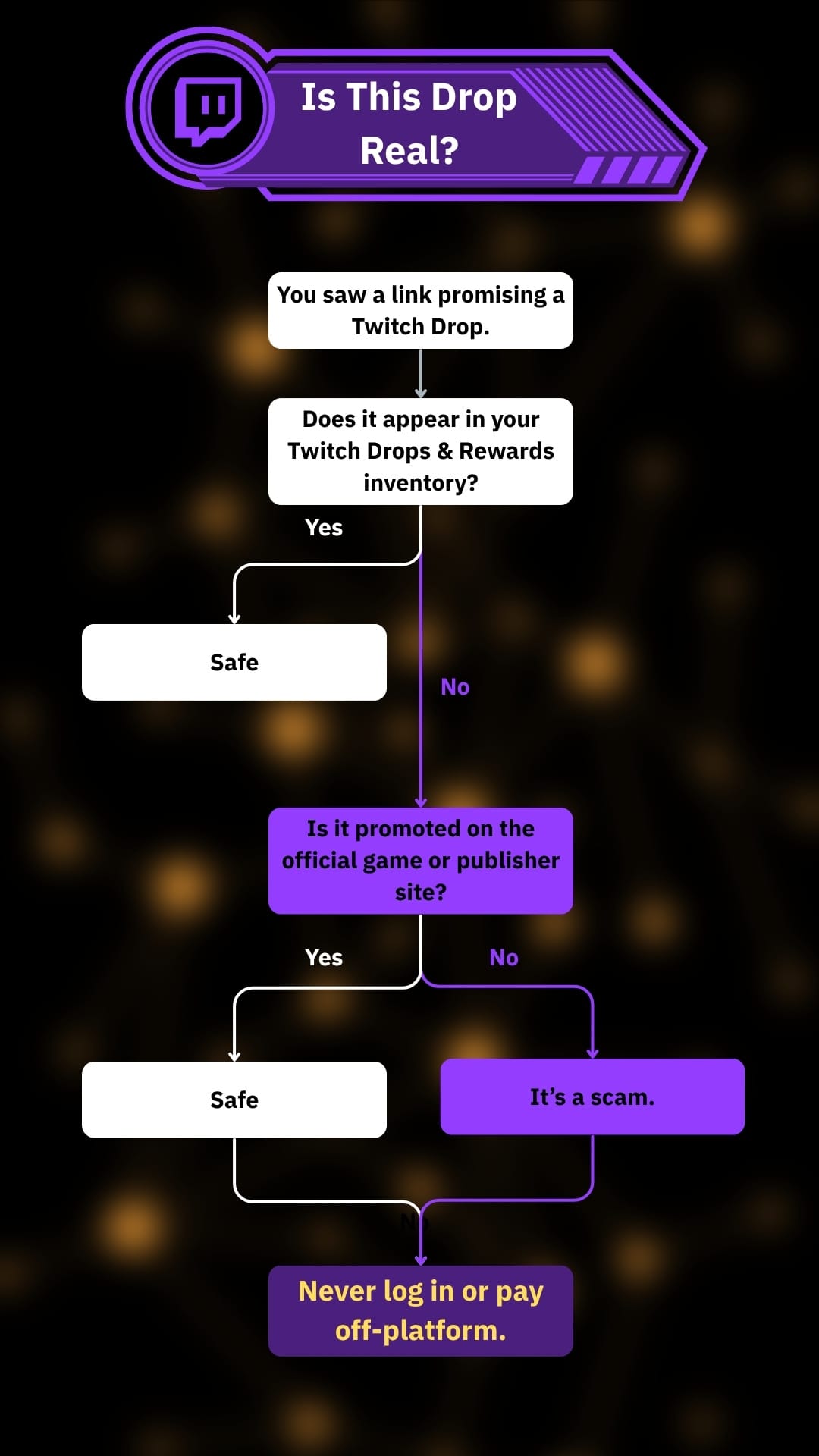
What Twitch (and mods) are doing, and how that helps you
Twitch invests in automated detection and offers channel-side controls. Suspicious User Controls, for instance, lets mods monitor and restrict likely evaders, while Shield Mode lets channels raise the security drawbridge during raids or abuse spikes.
As a viewer, you benefit when channels enable these. But don’t relax just yet: you’re still responsible for what you click and where you pay.
What to do if you think you’ve been scammed
- Contain the damage: First and foremost, if the harm’s already done, you need to mitigate its spread. Change your Twitch password and revoke suspicious connections in Connections/Authorized Apps, turn on MFA, then change the email password.
- Scan your device: Run a full malware scan and remove any recent downloads you don’t recognize. If you installed something via a sketchy “Drop,” or from another questionable source, treat it as compromised.
- Check transactions: Regularly review Bits/subs history and payment statements. If you see unknown charges, contact Twitch support and your bank immediately.
- Report suspicious activity: Use Twitch’s built-in reporting tools for the channel/user/link that scammed you. Reporting helps protect others and feeds platform-level enforcement.
Pro tip: If you mod or just want a quick PSA, this works well when you see suspicious links. Copy & paste it in the chat to raise awareness among channel viewers.
“Heads-up: Don’t click off-Twitch links for giveaways, Drops, or ‘support’ DMs. Real Drops show in your Twitch inventory. Don’t log in via random forms and turn on 2FA.”
Conclusion
Scammers thrive on Twitch’s energy and urgency, exploiting hype and trust to trick users into giving away money or data. Staying safe means slowing down, and verifying every offer, donation link and suspicious request before acting.
Enable MFA, avoid off-platform links and protect your devices with reliable security tools like Bitdefender Ultimate Security, which blocks phishing and malicious content. And if you’re unsure about a link or message, Bitdefender Scamio can help you check whether it’s a scam in seconds, because awareness, not speed, wins the game.
Frequently Asked Questions (FAQ)
Are there scams on Twitch?
Yes. Scammers use fake giveaways, phishing links, impersonation and charity fraud to steal credentials or money. Always verify links and campaigns before engaging.
What are the dangers of Twitch?
The main risks come from phishing, malware and social engineering. Scammers exploit hype and trust in live chats to trick users into revealing data or sending payments.
Are all ‘Twitch giveaway’ pages fake?
No, but most of them are. Always confirm the legitimacy of a Twitch giveaway via the publisher’s official website and your Twitch inventory. If a site wants your password or asks for card details to verify, it’s a scam.
A mod sent me a link: safe, right?
Not automatically. Accounts get hijacked, so treat every link as suspect unless you can verify it independently.
I got a Twitch account suspension email. Is that real?
Likely phishing. Don’t click the email link; instead, go to Twitch directly via your bookmarks to check your account status.
tags
Author
Vlad's love for technology and writing created rich soil for his interest in cybersecurity to sprout into a full-on passion. Before becoming a Security Analyst, he covered tech and security topics.
View all postsRight now Top posts
How Do You Manage Your Passwords? We Ask Netizens
December 18, 2025
Cybercriminals Use Fake Leonardo DiCaprio Film Torrent to Spread Agent Tesla Malware
December 11, 2025
FOLLOW US ON SOCIAL MEDIA
You might also like
Bookmarks





